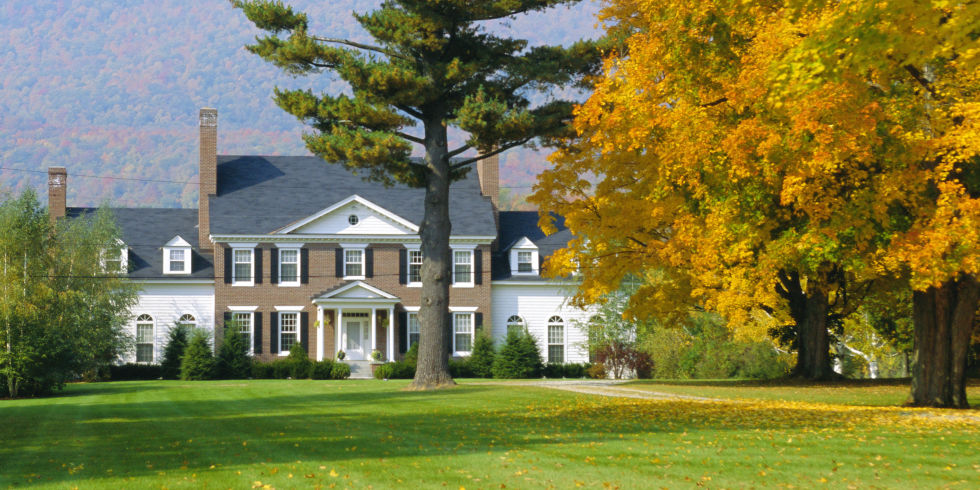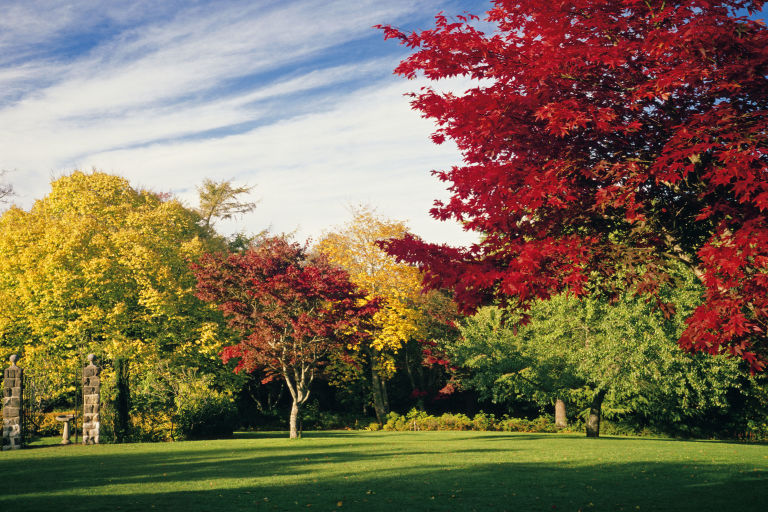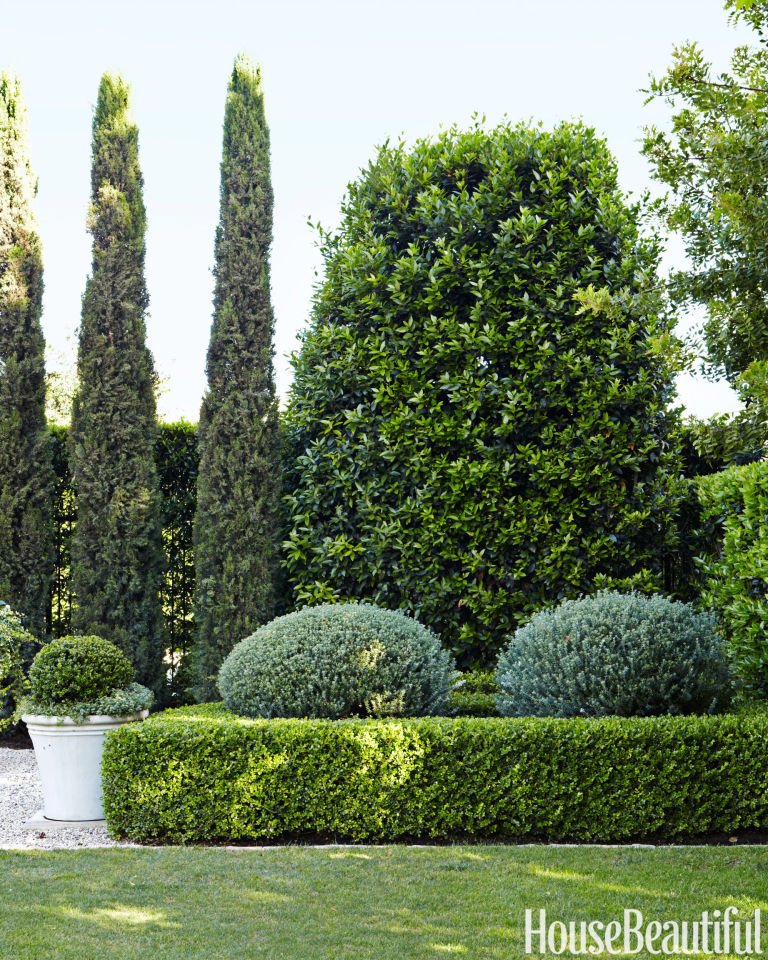

We asked a few pro landscapers to give us their to-do list, which you should steal and tackle between now and the end of November.
1. They give their lawn one last cut.
Continue to mow your lawn until it stops growing — yes, even if it's cold. "If grass blades get too long, they shade the other blades around them," says Scott Olivieri of Michael and Sons Nurseries in the New York City area. "Also, at snowfall, the too-long grass will get packed down and promote snow mold." The general rule of thumb? Keep grass around three inches tall — all year — so there is enough surface area for the sun to hit.
2. They test their soil.
This is good time to apply grass seed, but there's a crucial first step: "The soil should be tested to determine pH and nutrient availability," says Matt Owens, president of the Landscape Contractors Association. "Necessary deficiencies need to be corrected or you're just wasting time and money." Sending a soil sample to a professional for testing will cost about $15 — and it's well worth it. "Soil plays such an important role in the landscape, yet it often gets overlooked."

3. Then they reseed the lawn.
Once the soil is tested — and any deficiencies are corrected — it's time to aerate and seed the parts that are stressed from the summer's sun or trampled from foot traffic. It depends on the condition of the lawn, but you typically need about three pounds for every 1,000 square feet of lawn, says Josh Kane, president of Kane Landscapes in Northern Virginia. "I like to use certified seed, which means it's almost purely grass seed with very little weed seeds and no fillers."
4. They fluff up the mulch.
Officially, it's called turning the mulch. Fluffing it up gives flowerbeds a fresh look and cuts down on (or even eliminates) the need for more, fresh mulch. If you end up adding new stuff, keep the pile around two to three inches thick, Owens says. More than that, and the mulch becomes a hiding place for insects and plant diseases, and water could have a harder time being absorbed.
5. They make their own mulch.
If you find that, after you turn the mulch, you still need more, try making your own. There's no shortage of fallen leaves this time of year. "Run your lawnmower over your leaves a few times and use them as mulch for your flower beds," says Owens. "This is an excellent source of organic matter that your plants will love you for."

6. They do some planning and planting.
"Fall is a great time to plant," says Kane. "See what plants need to be divided or re-spaced (especially perennials like Hosta plants and daisies) and what areas of the landscape need to be filled in to make next year look even better." If you have summer annuals, swap them out for fall-appropriate mums and pansies.
7. They give their driveway and walkways some TLC.
Your lawn's overall look includes your driveway and walkways. "The fall is an important time to fill cracks in asphalt or concrete, and apply a sealant to help prevent water penetration damage from freezing and thawing," says Kane. Any time water gets into cracks and freezes, you are at risk for even more damage.
8. They water their evergreens.
"Make sure all evergreens are sufficiently watered in September and October to reduce the possibility of dehydration in the winter," says Kevin McHale of McHale Landscape Design in Maryland. How much water do you need? That depends on the recent weather. "If it's starting to be a rainy fall, no water is necessary. If it's less than four inches for the month, you'll need one or two thorough hour-long waterings once a week for up to three weeks."

9. They do some pruning.
Trees and shrubs typically need a heavy pruning before the cold winter. "Some may need it to help prevent damage from snow and ice storms and some just for looks or to control size for next spring," says Kane. Just don't prune certain flowering plants like hydrangeas, lilacs and viburnum, because it could spoil the spring bloom.
10. They pack up for the winter.
When your chores are done, bring in all of your tools, sprinklers and, especially, hoses. "Water in the hose will expand when it freezes and damage the hose," says Olivieri. "And don't forget to have all irrigation lines blown out so lines, heads and valves don't crack."
Original article and pictures take http://www.housebeautiful.com/lifestyle/gardening/a4289/fall-yard-chores-landscaping/ site
Комментариев нет:
Отправить комментарий